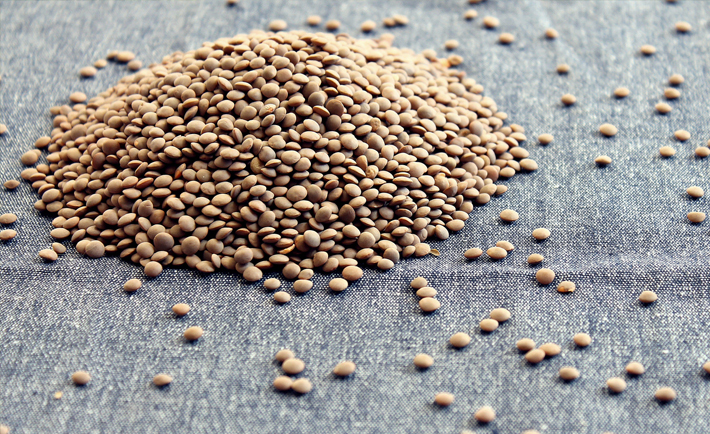
Le lenticchie di Santo Stefano di Sessanio
This post is also available in:
 Italiano (Italian)
Italiano (Italian)
Small and very tasty: a minuscule lentil of few millimetres of diameter, rounded and dark coloured, brown-purple. It grows over 1000 m above sea level and only on Gran Sasso, in the virgin territories of the National Park. Some cultivations touch 1600 m above sea level, but the best results are at 1200. Because of their small dimension and their extreme permeability, Santo Stefano di Sessanio lentils do not need soaking. They are extremely tasty and the best way to try them is a very simple soup: they must be covered with water and add some peeled garlic cloves, some laurel leaves, salt, extra virgin oil and bring to boil, with a lid.
It is not a common lentil, but a specific biotype selected in this area many centuries ago. Suffice to say that legumes, lentils in particular, were already mentioned in some documents of a monastery of 998. Here, it found the ideal habit with long and cold winters – at the end of which, at the end of May, lentils are sown – and short and fresh springs. Poor (calcareous) mountain grounds are perfect for lentils, that don’t require much fertilisation. They are challenging at the time of harvest, between the end of July and the end of August. Lentils ripen in scale and with different timing, according to the altitude. Sometimes, 15 days pass between mowing, almost always manual, and beating: mowed plants, if left on the ground, nourish the seeds making them ripe. Often, it not possible to use a combine harvester because the fields are on abrupt soils and because legumes grow near the ground and with a mechanised harvesting losses might amount to 30-40% of the harvest. Harvesting methods are the same ad a thousand years ago., and it is very difficult.
Text source: https://www.fondazioneslowfood.com/it/presidi-slow-food/lenticchia-di-santo-stefano-di-sessanio/
Photo source: http://www.tastefromabruzzo.com/home/chackkbx/public_html/?p=40
This post is also available in:
 Italiano (Italian)
Italiano (Italian)
Contatti
Santo Stefano di Sessanio()
